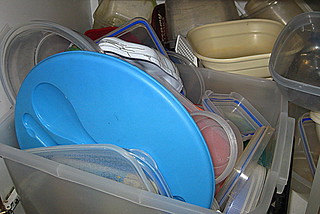If you’re under ten years old, stop reading now. Spoilers are coming.
There’s a community of atheists who all teach their children to believe in God. They enjoy seeing the comfort that this brings their kids, and the kids enjoy hearing about Jesus and the various Saints. As the children get older though, they question their parents whether God is real, and the atheist parents go to some trouble to persuade their children that it is so, because they want to keep the beliefs going as long as possible. However, inevitably one of the children discovers that the parents don’t really believe, and then tell all their friends.
Except, there is no such community – I just made it up. It would be absurd. It would also be absurd if a creationist community brought up their children with stories about evolution, or an Islamic community taught their children to believe in the Norse Pantheon.
I found myself reflecting on this over the Easter weekend, as I was caught up in the exercise of teaching children about the Easter Bunny. Are kids really better off with me telling them it’s real when I don’t believe it in myself? I have previously found myself conflicted over the Christmas-time story of Father Christmas / Santa / St Nick, and I expect I’ll find it troubling to get involved in the Tooth Fairy when our kids get older.
An article over at Parenting Science states that one researcher found there was no anger when children found out that their parents were lying to them. But on the other hand, that researcher didn’t interview me, and I recall being angry at the time I found out Santa wasn’t real.
Just like most caring parents, mine took extra effort to build up evidence of Santa’s existence: presents mysteriously appeared under the tree in the dead of night, food left for Santa was eaten, and sometimes Santa even left a note. I stayed up late to try to catch Santa in the act or spot a reindeer, but I never did. One year I did suspect the truth, and confronted my parents, but they denied it and talked me around to believing again. In the end, it was my younger brother who forced the situation, later getting my parents to admit it. I was absolutely distraught. Not really so much because Santa wasn’t real but because I’d been deceived, and (if I’m being honest) that my younger brother managed to discover the truth before me.
However, even if I am an exception (although some other people’s recollections suggest otherwise), and in fact no children are at all distressed by discovering the truth, then why should parents be anxious about their children finding out?
If anything, this is one of the things worrying me about being truthful with my own children: how other parents will react. There is the unspoken basic rule of parenting that no-one else should interfere with how you raise your kids, and others’ children finding out the truth from my own children could be seen as interfering. Unfortunately, it’s not clear how I could tell the truth to my own children and yet prevent them from telling this to their friends.
Still, learning the truth didn’t prevent me from continuing to enjoy Christmas and Easter traditions. An easter egg hunt is still fun even if the eggs were hidden by adults rather than a mystical rabbit. Receiving presents is still a delight even if it is adults giving them. I don’t feel I’ve lost anything important by gaining the truth about what is really going on. All the good stuff keeps happening, despite what Virginia was told.
One strategy I’ve heard is to share the truth but engage in some kind of doublethink where children are told that if they stop believing, then the good stuff will stop happening, eg. “if you don’t believe in Santa, he won’t bring you a present”. This doesn’t sit well with me, as the solution to a lie from an adult appears to be to invite lies from children: even if they don’t believe, they have to say that they do.
Another strategy I’ve heard is make the truth the answer to a puzzle. For example, if a child works it out, let them know they have been a clever-clogs but keep it a secret so as to not spoil their young friends’ and relatives’ efforts to work it out also. However, surely there’s no quicker way to encourage a child to share the secret than to tell them that?
A final strategy I’ve heard is to answer children’s questions truthfully, but position the belief in Santa et al as a game. For example, adults typically don’t have to explain to their children that Peter Pan (or Shrek or Cinderella) isn’t real, and acting out parts of the story in play-time isn’t engaging in deception. I feel that this strategy is probably a good one, but I’m not sure how easy it will be to implement in practice. It must be possible, since there are a couple of discussions of this approach on the Gransnet forum, including this gorgeous story from “veronica”:
I could not bring myself to lie to my children but they just grew up knowing that FC was a traditional thing that it was fun to keep up. My daughter when she was was about two had a red coat and she dressed up as FC with a beard and distributed presents to those present.
I’m aware that I’m not yet ready for The Question. However, with Easter successfully navigated and Christmas eight months away yet, the need to find The Answer is not an urgent one. But it would be great if Santa could bring it to me as a present.









